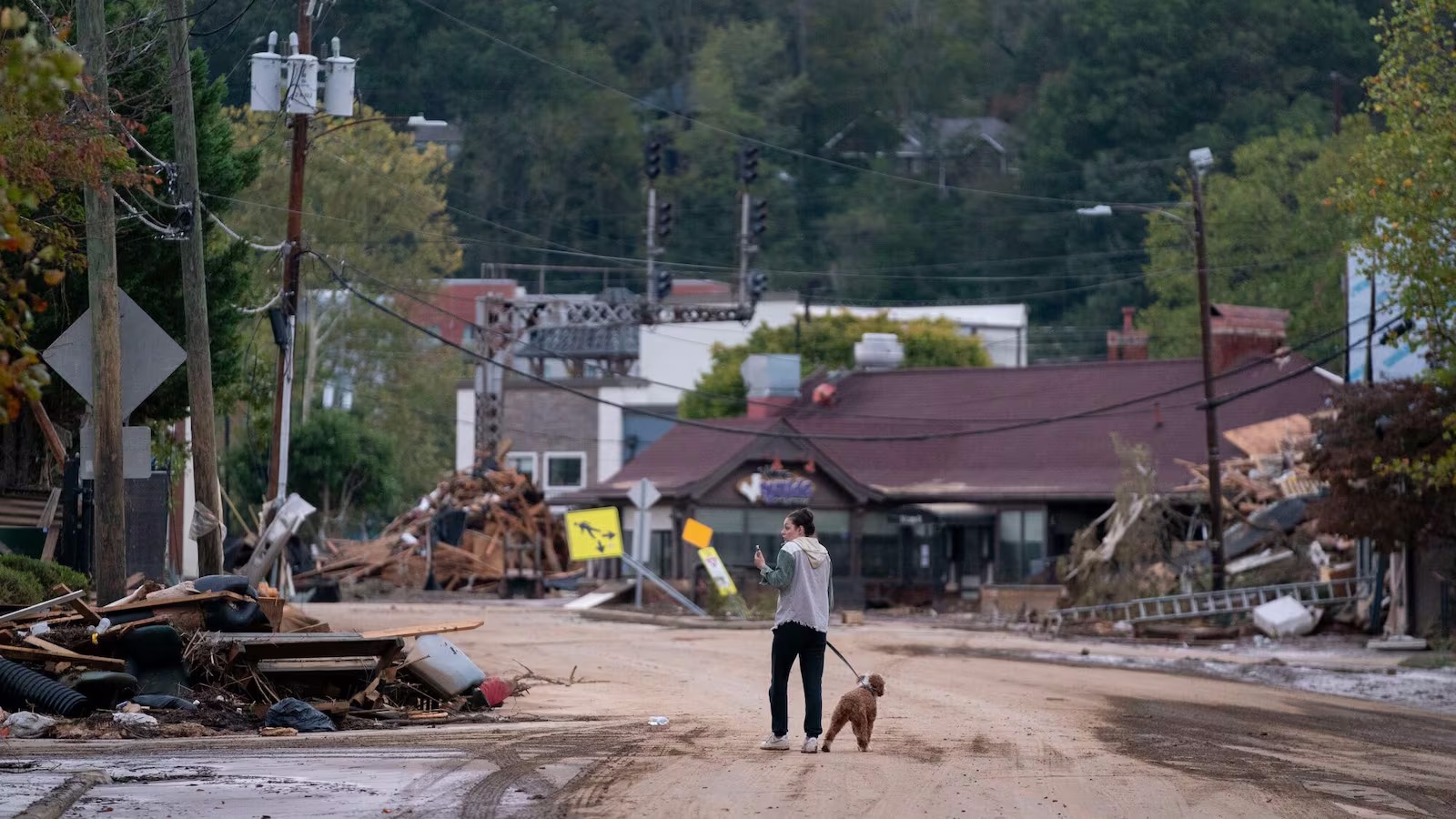
(Bloomberg) -- Ana Pinheiro Privette helps run a water security research center at the top school for civil engineering in the US. On Friday, as she watched Hurricane Helene’s rains unleash an unprecedented flooding disaster in her home of Asheville, it occurred to her that in Europe — she grew up in Portugal — houses are often made of stone or concrete. And that’s why she’d never seen one float away in floodwaters before Helene.
She spent the next three days trying to reach her kids and parents to let them know she was OK, making her one of the many researchers adjusting to the new reality that has overtaken one of the world’s most important hubs of climate research. She and others have been in survival mode, conserving gasoline, searching for clean drinking water, and huddling near any power source or wireless access.
Pinheiro Privette was able to fill her car with gas on Sunday and drove out of the epicenter of one of the worst flooding disasters in US history Monday.
Asheville, North Carolina, started calling itself “Climate City” in recent years, due to the massive number of federal agencies, universities and nonprofits there studying the atmosphere. But this weekend, that research hit home as Hurricane Helene dumped 14 inches of rain on the city and unleashed deadly floods.
The city of 94,000 may have the highest per-capita population of climate-related professionals of any other place, according to Ed Maibach, a professor at George Mason University. Many of those researchers were forced to fend for themselves as Helene’s rains overtopped riverbanks, blew out substations and left at least 150 dead across six states.
Pinheiro Privette pushed scientific training mostly out of mind to focus on basic needs like food, water and shelter. It took her three days to get out of the city besieged by flooding brought on by rainfall that “goes well beyond the 1-in-1000-year total,” according to a North Carolina State Climate Office assessment published Monday.
Yet even as she has taken care of herself in the wake of Helene, her scientific training is never entirely out of mind. She made sure to inform local friends as the storm hit that floodwaters can flush the sewage system, so be sure to fill up containers with water, a lesson she learned working with the city of Chicago.
Other scientists in Asheville are also trying to cope with the lack of power and water. “We are pretty consumed with the basics of making sure we have enough water and food on hand, helping neighbors, etc.,” said Tom Maycock, a writer and editor at the North Carolina Institute for Climate Studies. He wrote in an email, declining an interview, from a parking lot a mile from his house.
Ian Randall, director and principal consultant at Wasafiri Consulting in Asheville, said the conditions reminded him of his grandfather's stories of World War II in London, with people gathering around radios waiting for any shred of information.
While Pinheiro Privette is still processing her experience at the epicenter of disaster, she’s also thinking about how Helene will reshape her and her colleagues’ professional lives as they grapple with reimagining infrastructure that’s resilient in the face of increasingly intense storms and deluges.
She previously worked as a sustainability leader for Amazon Web Services and headed the Obama administration’s Climate Data Initiative — and Asheville is where a lot of key climate data lives. In 1951, the US relocated 300 people and 3 million pounds of weather records from New Orleans to the mountain town. Today, the federal facilities in Asheville, known as the National Centers of Environmental Information (NCEI), house the world's largest library of weather and climate data, some documents as old as the country.
It includes everything from the jottings of long-gone sailors who’d dip thermometers into buckets of seawater generations ago to today’s sophisticated global monitoring. Yet while Asheville on first blush seems more climate-proof than New Orleans, the servers there have gone dark. For those looking to get the average nighttime temperature in Bangor, Maine, a list of the 10 hottest years on record or how Hurricane Helene will rank among the billion-dollar disasters to hit the US, it’s been impossible to answer these questions through a web browser.
Tuesday afternoon, NCEI reported for the first time that all its personnel were accounted for in the wake of the storm, although most of them were — like most in Asheville — still without reliable sources of water, power or network connections. The headquarters itself was still without water and network connectivity, and the data centers were down. NCEI leadership, consumed with urgent logistics, were as yet unable to focus on explaining the crisis since they were, like everyone else, trying to cope with it.
Scientists in other parts of the world have been working to provide that context. Climate change may be responsible for adding up to 50% more rainfall to Helene, in the Carolinas and Georgia, and for making the event 20 times more likely, according to an initial analysis by researchers at Lawrence Berkeley National Laboratory.
The warm Gulf of Mexico water and atmospheric water vapor allowed Kathie Dello, North Carolina's state climatologist, to realize as the storm formed, "This hurricane has the fingerprints of climate change on it," she said.
Though Dello isn’t in Asheville, it’s been a challenge for her to reconcile her professional and personal identities amidst a storm that hit so close to home.
"I can't just be upset all the time," Dello said. "That's not a good mental state to be in and I can kind of turn it off and approach it as observer. This one, I haven't been able to. It's been very rattling.”